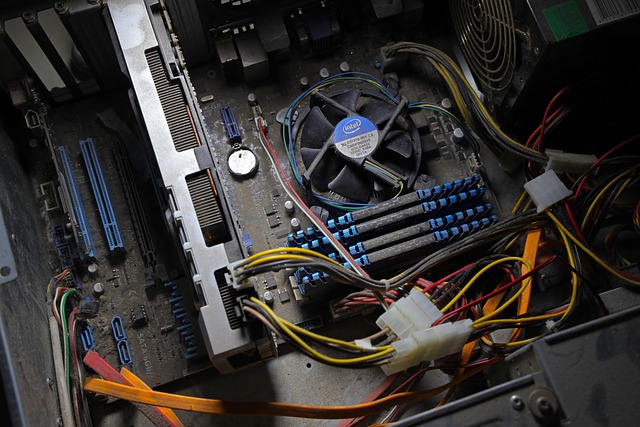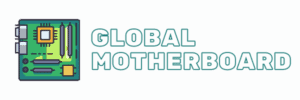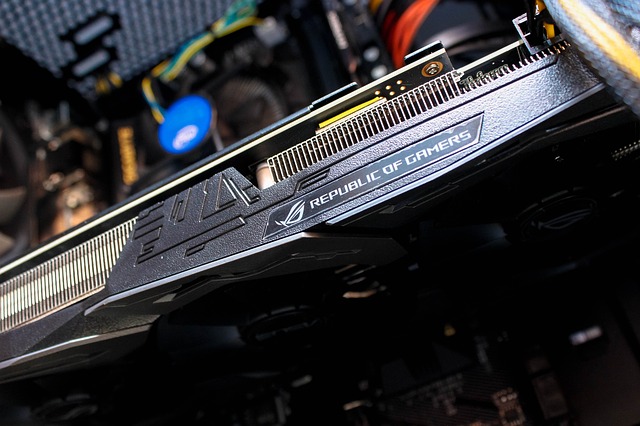Building a custom gaming PC is a popular choice for gamers who want to get the most out of their own system. When building their own computer, PC gamers can choose from a wide variety of different components and parts on virtually any budget in order to set their most specific expectations. One of the most important components when building or upgrading your PC gaming equipment is the computer’s motherboard.
The Gaming motherboards are unique because they are built from the ground up to handle the most extreme equipment used for game settings. Gaming motherboards have overclocking features, including multiple slots for upgrades to RAM, USB, and display ports for connectivity to monitors and hardware, as well as huge, spaced dedicated ports for graphics cards.
Best Starter Gaming Motherboard
Below we listed some of best performance starter gaming motherboard.
ASUS TUF Gaming Z590-Plus
About this item
- Intel LGA 1200 Socket: Designed to unleash the maximum performance of 11th Gen Intel Core processors
- Enhanced Power Solution: 14+2 DrMOS power stages, ProCool sockets, military-grade TUF components, and Digi+ VRM for maximum durability and performance
- Comprehensive Cooling : VRM heatsink, PCH fanless heatsink, M.2 heatsink, hybrid fan headers and Fan Xpert 4 utility
- Ultra Fast Gaming Networking : Intel WiFi 6 AX201 (802.11 ax), Intel I225-V 2.5Gb LAN, TUF LANGuard and TurboLAN technology
- Fastest Connectivity: Triple M.2/NVMe SSD, Front panel USB 3.2 Gen 1 Type-C header and Thunderbolt 4 header
Gigabyte X570 AORUS Elite
About this item
- Supports AMD 3rd Gen Ryzen/ 2nd Gen Ryzen/ Ryzen with Radeon Vega Graphics processors
- Dual channel ECC/ non ECC unbuffered DDR4, 4 DIMMs
- True 12 phases digital VRM
- Extended VRM Heatsink
- Dual ultra-fast NVMe PCIe 4.0/3.0 x4 M.2 & thermal guard
ASUS ROG Strix X570-I Gaming
About this item
- AMD AM4 Socket and PCIe 4. 0: The perfect pairing for Zen 3 Ryzen 5000 & 3rd Gen AMD Ryzen CPUs
- Next-gen gaming connectivity: features PCIe 4. 0, HDMI 2. 0, DisplayPort 1. 4, Dual M. 2, USB 3. 2 Type-A and Type-C connectors.
- Fastest gaming networking: Intel Gigabit Ethernet With Asus LANGuard, Wi-Fi 6 (802. 11Ax) with MU-MIMO support, and Gateway teaming via GameFirst V.
- Optimal power solution: 8+2 power stages with a ProCool II power connector, alloy Chokes and durable capacitors to support multi-core processors.
- Comprehensive cooling design: features an actively-cooled VRM, Chipset combo heatsink and heat pipe to absorb and rapidly dissipate heat, meanwhile paired with AIO pump header and multiple chassis-fan header.
- Unmatched Personalization: ASUS-exclusive aura Sync RGB lighting, including RGB headers and Gen. 2 addressable RGB headers.
- Industry-leading ROG audio: High-fidelity audio with Supreme S1220A, DTS Sound Unbound and Sonic Studio III to draw you deeper into the action.
Source: asus.com
MSI MAG B550 TOMAHAWK Gaming Motherboard
About this item
- Support for 3rd Gen AMD Ryzen processors and future AMD Ryzen processors with BIOS update
- Supports dual channel DDR4 memory up to 128 GB (4866 MHz)
- On-board dual LAN: 2.5G LAN plus Gigabit LAN
- Mystic Light: RGB LED lighting and extendable pin headers – 16.8 million colors / 29 effects
- Audio Boost rewards your ears with studio grade sound quality for immersive gaming experiences
- Premium Thermal Solution: Aluminum Cover with additional choke thermal pad rated for 7W/mk and PCB with 2 ounce thickened copper
- Lightning Fast Game Experience: PCIe 4.0, Lightning Gen 4 M.2 with M.2 Shield Frozr, AMD Turbo USB 3.2 GEN 2
GIGABYTE H410M S2H V2
About this item
- Supports 10th Gen Intel Core Processors
- Dual Channel Non-ECC Unbuffered DDR4, 2 DIMMs
- 8-Channel HD Audio with High Quality Audio Capacitors
- Ultra-Fast M.2 with PCIe Gen3 X4 & SATA Interface
- Intel GbE LAN with cFosSpeed Internet Accelerator Software
Do you have doubts when choosing a motherboard for your PC? This component is the cornerstone of your computer, so it is important that you choose properly. We explain everything you have to take into account to get your purchase right.
If we think about which are the most important components of a computer, the motherboard occupies a prominent place among them, since it is a fundamental part to assemble the equipment. For this reason, it is very important that you choose the one that best suits your needs carefully. To give you a hand in this task, we are going to give you the keys to choose a motherboard for your PC .
The first thing you have to do before deciding on one model or another is to determine what type of computer you need , and choose the type of processor you will need . Next, after choosing the processor platform that you are going to use, it is time to lay the foundations that will support the rest of the components: The motherboard or Motherboard.
If you are not sure what to do, in this article we will guide you about everything you need to know to choose the right motherboard for your PC .
Size Matters
One of the first aspects that you have to look at when buying a motherboard is the dimensions. There are several sizes, and depending on the type of computer you need, a full-size (ATX), mid-size (micro ATX) or small (mini ITX) form factor will be more suitable. This decision should also be taken into account when choosing other components such as the box for your PC or RAM .
The ATX format motherboards , by having more surface area for the integrated circuitry, have a greater number of slots and expansion connectors for the components. For pure physical availability of space, the smaller the size of the motherboard, the fewer connectors and expansion possibilities it will have.
In addition, the format of the motherboard will determine the size of the case for your PC and, therefore, can also affect the choice of its cooling systems.
For example, in the case of mini-ITX motherboards , the limited space available in the boxes suitable for their size, requires the use of low-profile cooling solutions, passive dissipation and even hybrid systems .
Choose The Right Plinth
Another of the key points that you should pay attention to when you go to buy the motherboard for your PC is the socket or socket. This element is the place that the processor occupies on the motherboard, and you must make sure that it is suitable for the chip you have chosen. In turn, the platform socket must also be taken into account when choosing a processor, since it also affects the compatibility of the entire set of components.
Manufacturers use the socket type to classify their products, so that different series of processors from the same manufacturer can share the same socket, although their performances are very different.

Intel currently uses the LGA 1151 socket type for its range of domestic processors, which will soon be replaced by the LGA 1200 socket, and the LGA 2011 socket (or its LGA 2011-3 variant) for its very high-performance ranges and processors for servers.
For its part, AMD uses sockets FM2 and FM2 + for its processors with integrated graphics chip and the socket AM4, AM3 and AM3 + for the rest of domestic processors.
Quality In The Circuits
As in any commercial product, there are different manufacturing qualities depending on the use that will be given to the motherboard, and the use of that higher quality usually also carries over to its price.
If the motherboard is to be installed in a low-demand office equipment, you don’t need to invest in boards that contain high-performance capacitors and circuits.
On the other hand, if your computer is going to suffer heavy workloads, or you are going to overclock your computer (increase the processor’s working frequency to obtain more performance), the motherboard will have to withstand a high level of electrical demand, for This must have the highest quality power circuits and phases to ensure the electrical stability of the entire set. Otherwise, this overload could damage the motherboard itself or any of the components connected to it.
The use of more amount of conductive metals such as copper or gold in the manufacture of the motherboard, having solid capacitors (misnamed capacitors) and aluminum heat sinks that allow passive cooling of the chips integrated in the board are some factors you should have when choosing your motherboard .
The Motherboard Chipset
Within the cataloging of the same socket, you will find motherboards that use different types of chipsets. The type of chipset determines the number of connections available on the motherboard (SATA, PCI-E, USB connectors, etc.), amount and frequency of RAM memory that you can install or the possibility of blocking or unblocking some functions of the processor such as virtualization systems, overclocking or energy efficiency options.
Once again, before choosing the motherboard chipset for your computer, it is important that you are very clear about the use that you are going to give the computer. For example, if you are going to configure a Gaming PC, you will have to have a chipset that allows you to install faster RAM memories.
Are You Planning To Add A Graphics Card Or Two?
Is running the latest games among the usual tasks on your PC? If the answer is yes, perhaps you have thought about the possibility of installing two (or more) graphics cards to increase the graphics performance of your computer .
When choosing the motherboard you should take this decision into account, since not all motherboards support the simultaneous installation of two graphics cards or more . For this, the manufacturer must expressly indicate that the motherboard is compatible with SLI (for Nvidia cards) or Crossfire (for ATI graphics cards). Connections on the motherboard
In essence, motherboards are the connection center of your computer, so you must make sure that the chosen one has the number and type of connections you need.
As we have already indicated, the number of connections is closely related to the type of chipset you have chosen. However, even if two motherboards use the same chipset, the connections they offer may be different.
In that sense, you should not only check if the board has more or less SATA connectors for hard drives or with a certain number of USB, you should also check if it offers the type of audio and video connectors you need, if it has connectivity Built-in Wi-Fi, Bluetooth, etc.
Other Cool Features On A Motherboard
In addition to the basic features required, manufacturers add unique features and enhancements to their motherboard models that set them apart from the rest.
Among these improvements, for example, you will find the integration of the new M.2 connectors that will allow you to install the latest generation solid state disks (SSD) , high-quality sound cards integrated into the motherboard, Overclocking systems that allow you to increase the performance of your computer with a single click, recovery of automatic settings or protection systems against electrical surges for your computer .







